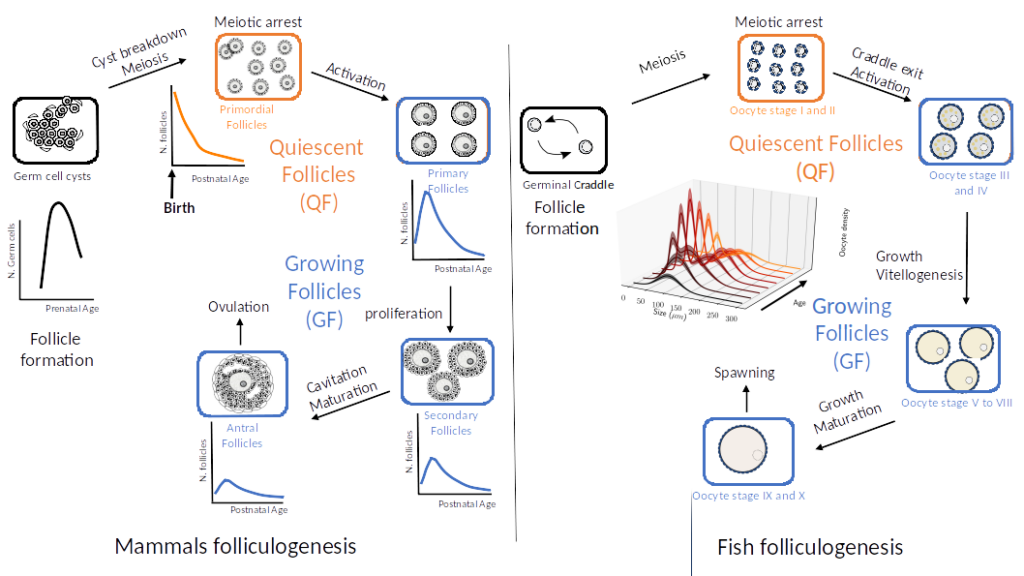OVOPAUSE (“Dynamics and control of female germ cell populations: understanding aging through population dynamics models”) is an AAPG ANR (2022-2027) project dedicated to the understanding of the dynamics and control of the female germ cell populations throughout life. Our methodology combines comparative physiology, wet-lab experiments and innovative imaging approaches to obtain quantitative data on mice and medaka ovogenesis, and mathematical modeling using structured populations dynamics framwork.
It involves three partners:
- MUSCA. Members: Romain Yvinec (Scientific coordinator), Frédérique Clément, Eric Reiter, Pascale Crépieux, Frédéric Jean-Alphonse, Louis Fostier (Ph.D)
- the Physiology of the Gonadotrope Axis Laboratory, INSERM U1133, CNRS UMR8251, Université Paris. Members: Céline Guigon (Partner 2 coordinator), Raphaël Corre.
- the Fish Physiology and Genomics Laboratory (LPGP) UR1037 INRAE. Members: Violette Thermes (Partner 3 coordinator), Florent Murat, Manon Thomas, Stéphanie Gay, Cécile Duret.
The general overview of the project is summarized in Figure 1 below.

The main workpackages of the project are:
- WP1 : We aim to generate specific new data to fill important gaps in the monitoring and control of follicle dynamics, using mouse and medaka animal models. We rely on 2D and 3D imaging of animal ovaries at different ages, as well on molecular and cellular biology to reveal key signaling pathways involved in the control of follicle dynamics.
- WP2: statistical and artificial intelligence-based procedures to obtain fast, reliable and robust information from imaging data. In particular, we aim to develop automatic follicle detection methods.
- WP3: Populations dynamics modeling. We develop and analyze generic population dynamics models for ovarian follicles, structured either by discrete maturation compartments or by continuous morphological variables (see Figure 1). The models will be numerically instantiated for mice and medaka, using both already available data and newly acquired data from Tasks 1 and 2. We will focus on the feedback of growing follicles onto quiescent ones to identify the contribution of the growing follicle population to the longevity of the germ cell pools and its variability.
- WP4: We aim to explore various physiological and perturbed scenario to give insight into the long time supply of germ cells and to develop a multiscale framework towards predicting the lifespan of the ovarian reserve.
Job Opportunities
Two post-doctoral positions will be opening, one on artificial intelligence and in-depth statistical analyses of ovaries imaging data, and one on stochastic population dynamics modeling and mixed-effect model inference. Please contact Romain Yvinec for more information
